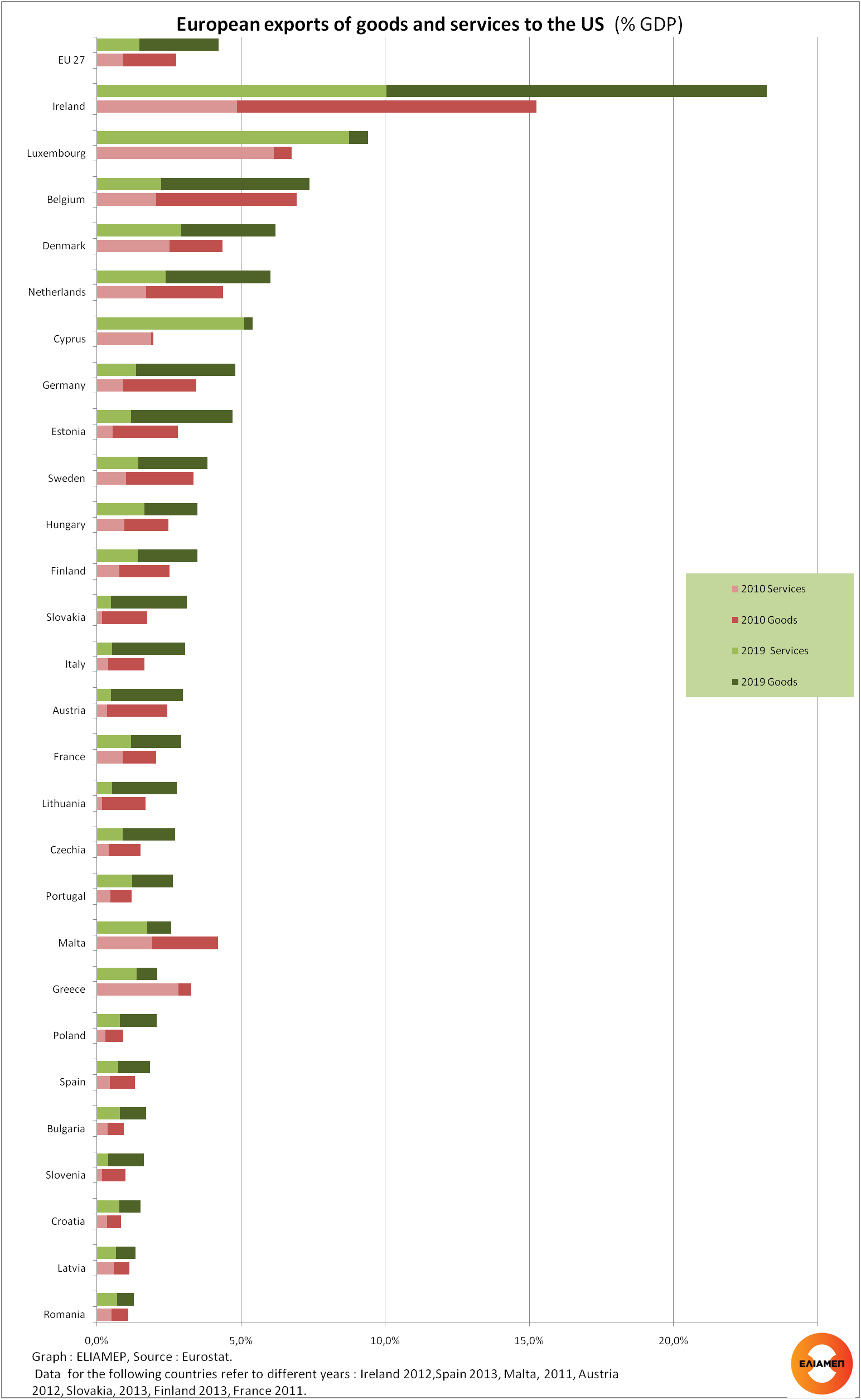The European Union and the United States have the largest bilateral trade relationship and enjoy the most integrated economic relationship in the world. Taken together, the economies of both territories account for one third of global trade in goods and services. The EU-US trade relationship remains strong despite the economic challenges related to the Covid-19 pandemic.
Indeed, the Covid-19 crisis has led to a contraction of EU-US bilateral trade. Exports of goods and services from the EU to the US decreased in 2020 (by 8.16% and 12.13% respectively compared to 2019). However, in 2021 exports of goods and services from the EU to the US increased again (by 13.1% and 20.5% compared to 2020).
As we reported in a previous In focus, in 2021 China was the largest partner for European imports of goods (22.4% of the total) and the USA was in the second place (11%). However, the United States was still the largest importer of goods from Europe (18.3% of the total), well ahead of the United Kingdom (13.0%) and China (10.2%).
The largest exporters of goods to the US in 2019 were Germany (€119 billion), Ireland (€47 billion), and Italy (€45 billion). In Ireland, the exports of goods to the US were 13.2% of GDP. Belgium (5.1% of GDP), the Netherlands (3.6%), Estonia (3.5%), and Denmark (3.3% of GDP) had also significant dependence on US imports of European products.
From 2010 to 2019, EU exports of goods to the US increased significantly: from €202 to €384 billion, and from 1.85% to 2.74% of EU’s GDP. Exports of goods to the US increased during 2010-2019 in almost all Member States. (Only in Malta the decreased both in value and as a percentage of GDP, while in Romania exports of goods to the US decreased slightly as a percentage of GDP, although they increased in value.) In some member states, the increase was significant. In Cyprus, exports of goods to the USA tripled, while in Italy and Poland they doubled. In Greece, the share of exports of goods to the US increased from 0.44% in 2010 to 0.71% of GDP in 2019. However, Greece ranked 23rd among 27 member states in terms of the share of exports of goods to GDP that go to the USA.
When services are taken into account, the US remains the EU’s largest trading partner by far. Bilateral trade in services reached a record in 2021 and accounted for more than 500 billion euro. From 2010 to 2019, exports of services from the EU to the US increased significantly (from 101 to 208 billion euros, and from 0.92% to 1.49% of EU GDP). The largest exporters were Germany (€47.5 billion), Ireland (€35.8 billion), and France (€29 billion). During the period 2010-2019 exports of services increased in almost all Member States, and in fact in several countries they doubled. (In Malta, from 2011-2019, service exports to the US fell slightly as a percentage of GDP, although they rose in value.) Greece is the only country to report a decline in the value of exports of services to the US (by 3.8 billion), while total services from the EU to the US increased. The share of Greek exports of services to the US decreased from 2.85% of GDP in 2010 to 1.40% in 2019.
Although the pandemic was only a temporary obstacle for transatlantic trade, a number of concerns have been raised over the $369 billion in new subsidies provided for clean technology and renewable energy in the recent Inflation Reduction Act in the US. This is creating tension between two of the world’s largest trading partners. As the president of the European Commission stated: ‘There is a risk that the IRA can lead to unfair competition, could close markets, and fragment the very same critical supply chains that have already been tested by COVID-19.’




